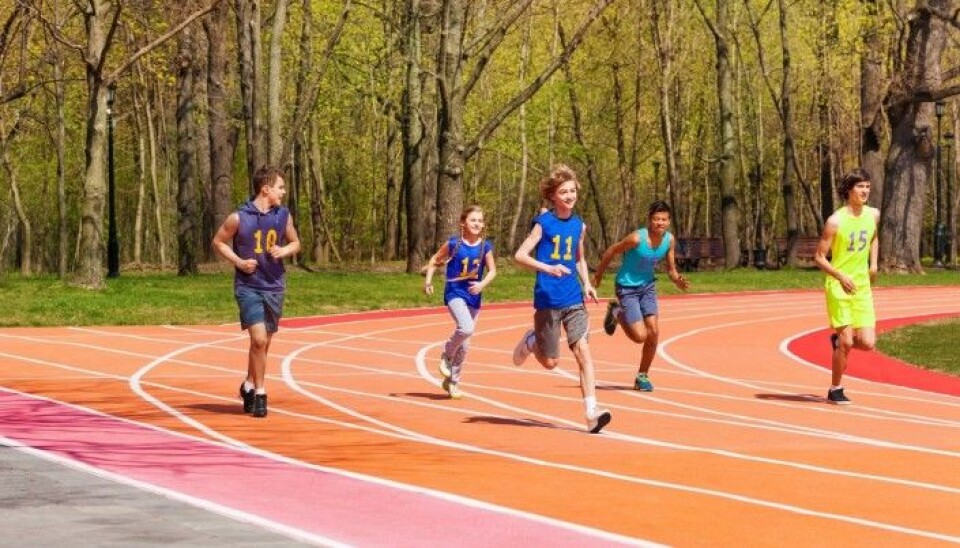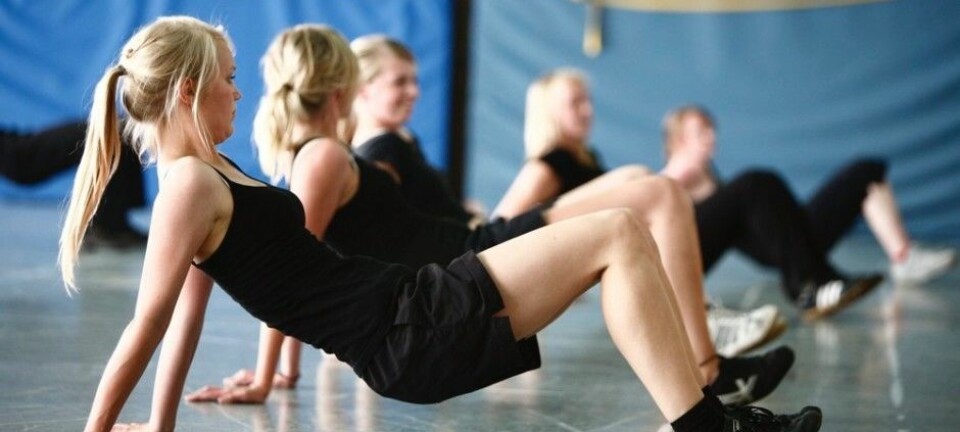
Physical education: What if we took away the pressure to be good at sports?
A researcher believes that’s how physical education should be. He’s been studying what gym class could be like when physical skills don’t count for students’ grades.
Norway will be implementing a new physical education curriculum in 2020. In the meantime, professionals and researchers are debating what that should look like.
What does it really mean that students will learn to "practice training methods to improve skills in individual sports, dance and alternative movement activities?"
Are they supposed to be learning training methods or improving their skills?
Morten Corneliussen Rustad, a PhD candidate at the Norwegian School of Sport Sciences (NIH), believes it’s the first.
Skill mastery elusive for many
He worries that too many students rarely experience mastery the way the subject is taught today.
“Major surveys show that 12-13 per cent of students hate gym class, and a third more feel that the subject should be taught differently. Although a lot like the subject as it is, the subject may at worst be directly harmful for others,” says Rustad.
He adds that some kids go through thirteen years of school and “all they’re left with is an experience that they’re incredibly bad at being their body.”
For the past year, Rustad has used students and teachers as co-researchers to develop new forms of teaching and assessment in physical education.
Parkour, longboard and folkdance
The goal has been for students to learn how to find good ways to practice an activity. Measuring their progress with a stopwatch or reaching a certain level has not been a goal in itself.
This approach raised eyebrows among some teachers. No goal to get better? No reward to run like lightning, throw super far and do somersaults? Isn’t that what it means to be “good at gym?”
It was challenging for teachers to teach and evaluate students with a different starting point than they were used to, Rustad says. In addition, traditional activities were swapped out for others that the teachers were not as familiar with, like parkour, longboard and folkdance.
Rustad has high praise for the teachers in the project.
“First, they had to alter their and the students’ perceptions that sporting achievements were what students should learn and get graded on. Instead, teachers were asked to use the activities as a means to develop the actual curricular competency goal, namely that students practise different approaches and methods,” he says.
Students gained inspiration and instruction from many sources: They watched videos, received feedback from teachers and each other, filmed their practice and explored movements. Some students practiced jumping over a bench in different ways in parkour, for example.
Towards the end of the year, students themselves chose a topic in an activity. Topics ranged from expressing love in dance, to practising different fakes in basketball and breathing techniques in yoga.
The students also had to describe and evaluate the exercise in writing, which became part of the assessment basis for the teacher – regardless of how the student performed physically.
Researchers disagree on the subject
An important question is what students should be doing in gym classes. Should ball games and traditional sports continue to dominate class time?
In a Science Nordic blog post last year, physical education researchers from Inland Norway University of Applied Sciences commented that opinion is divided among researchers and professionals. Some claim that physical education is primarily for students to learn sport techniques. Others emphasize health. Then there are those who think that the subject should teach students to be “self-active.” Dance and outdoor life skills also have their followers. Since 2015, swimming has gained greater prominence on the agenda.
Morten Rustad believes class time should be more diversified, and bases his opinion on Swedish research.
"If you have too many ball games and spend a lot of time teaching sports, students will easily fall into learning specific and standardized movements. And from there, the teacher may naturally think that students should be tested on how well they execute these movements," Rustad says.
He thinks it's better for students to work more independently, with less instruction from the teacher and with activities that allow for more exploration.
Erlend Ellefsen Vinje at OsloMet and the University of South-Eastern Norway is among those who believe that ball games and traditional sports should keep their place in gym class.
He thinks educators need to instead ask whether an activity is a good choice in terms of developing both physical/motor and social skills.
Vinje believes that teachers give grades in part on the basis of how well the student does in sports, and emphasizes that more needs to be considered in the assessment, such as students’ effort and physical condition.
Better to give them independence and tools
Although Rustad believes that the students shouldn’t be judged on how good they are at a sport, he emphasizes that sports-loving athletes can still cultivate those skills in gym class.
He mentions how two boys in his research project worked on trick shot finishes in handball.
It’s fine for them to have personal goals of developing and improving, but they shouldn’t be evaluated on whether or not they reach a certain level," he says.
Rustad says that way students become independent and don’t rely on someone to tell them how to be physically active.
"Knowing how to be active and exercise your own body later in life is a way to achieve lifelong enjoyment of physical activity,” he says.
Will greater academic skills be required?
For some of the students in the study it was challenging to work independently, Rustad says.
“Students have to learn this. They’re so used to following directions, and lots of them have been doing organized sports and like it. But students and teachers also thought it was a positive that the students had more freedom so that they needed to create their own structure.
Rustad has noticed that it is difficult for some of them to evaluate themselves in writing.
“Students expressed that they experience gym class more like a school subject, when they’d rather just get instructions, participate and make an effort. We also know from our research that many students simply want to be active,” he says.
He recognizes that there may be a risk of more students dropping out if greater emphasis is placed on students documenting what they know in writing.
“An academically strong class may be used to writing a lot, but alternatives to writing could be to use video, podcasts or one-on-one and group conversations during class for assessment.
Gym as subject for all
"As a general subject for all, physical education isn’t meant to educate athletes. It’s intent is to educate people who can function in society and feel good about themselves and others. And who, at their own level, can learn new ways to move and find joy and meaning in being physically active, without it mattering how good they are at it,” says Rustad.
If you choose to study sports, on the other hand, completely different proficiency benchmarks apply.
Rustad provides an analogy to his view of physical education:
If students are learning about literary genres and read a book, they don’t have to memorize the content of the book. They’re trying to understand what a genre is and how to read, understand and write in a certain genre. Again, it’s the process itself that is the competency, more than how good you are at regurgitating the content or how quickly you read the book," says Rustad.
-------------------------------------
Read the Norwegian version of this article at forskning.no.

































